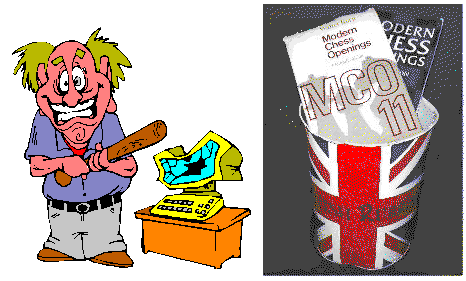

Fabiano Caruana won the USA Championship for the third time in a row.
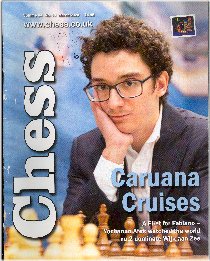
This is what he looked like in 2020 - he still looks the same.


C. Carls - O. Bernstein, Bremen 1901 (Black to play and win.)
Clue
It is mate in 7 the c8 Bishop gives mate on f1.
Solution
1...Qg1+ 2.Kxg1 f2+ 3.Kf1 Bh3+ 4.Ke2 f1Q+ 5.Ke3 Qf2+ 6.Kd3 Bf1+
V. Anand - P. Leko, Nice 2009 (White to play.)
Clue:
Is there a Knight Fork Pattern in there?
Solution:
35.Bxf7+ Rxf7 36.Qh8+ 1-0 36...Kxh8 37. Nxf7+
The Fahrni Position. (White to play and win.)
I decided to use this after seeing it in the endgame section of the book I mention below.
Some experienced players have even failed to find the win OTB and agreed a draw.
More bad news. Some RHP players have had the same position and agreed a draw.
The good news Some RHP games have been won by using the winning technique.

You want the same position but with Black to move. So you use Triangulation.
Just one of the RHP stalemates. James Morkel - Draugdur RHP 2013
White played 64.f8=Q stalemate.
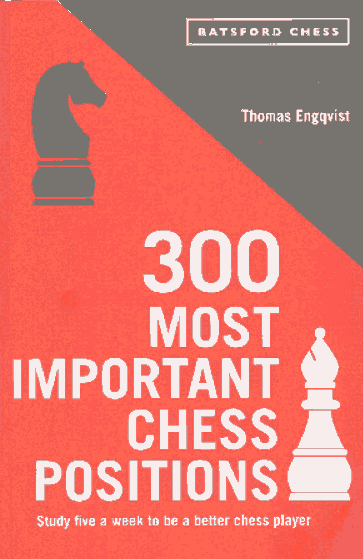
I recently picked up this for 1.00 it is by Thomas Engqvist.
The author states the book is aimed at players rated 1000 to 30,000! (sic)
I ve heard of targeting an audience before, this lad is trying to reach everyone!
Thomas also wants you study just five positions a week. (that will take a year)
because if you hammer your way through the book spending five minutes on
each one then you will only pick up a smattering of each example and forget it.
I agree with that but I cannot see anyone doing it. Maybe some bod in the middle
of nowhere with no T.V. no computer access and no girlfriend might be up for it.
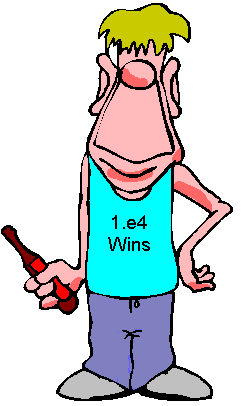
Part II of the book 150 Important Positions in the Ending is very good
but I m not too sure about Part I. Let us look at the very first example.
Paul Morphy - Charles Stanley, New York 1857 (White to play)
Morphy played 9. Nc3 and we are told he was the first to play 9.Nc3 on a regular basis.
Then we are informed that White has the advantage due to a strong centre and time.
And that is it! No more moves. The reader is not shown what could happen next.
I guess this is what the author wants. You the reader, if you are eager enough, now
have to find the game in question and study it as part of your five a week program.
That is not going to happen is it. Your average player whose chess library is often sparse,
especially in these everything is on the net days will have to find it on the net but once
they having clicked though it (two minutes) they will stay on the net and play bullet chess.

The author does this in quite a number of the examples. A few moves then Good Luck!
I think having them with the book in their hand and giving them the full game with light
notes is a better method than sending them off to the library or to some site on the net.
Something like this and just to be different I m not going to use the Morphy game.
George Perigal - Wolf Meyer Popert, London 1837
To be honest that Morphy game in question is not one of his instructive sparklers.
Morphy comes out the opening with a good position but goes astray wrapping it up.
Morphy is a piece up but has to give it back. 22...Kc8 23.Rc4 Kc7! and White
is toiling to win that. But again, maybe this is what the author has in mind..
The reader to find the game, analyse it in depth and be all the better for it.
I think he overestimates the eagerness of the average under 2000 player.
Am I underestimating the eagerness of the average under 2000 player?
Maybe 30 years ago there is no doubt the author s method stands a good chance
of getting a player to do the three B s: Book, Board and Bedroom but these days
with the distraction of DVD s promising a quick fix and computers doing the thinking
for most less experienced players I think if you have the student at the board with a
book in hand (well done ) do not give them an excuse to drop everything and hit the net.
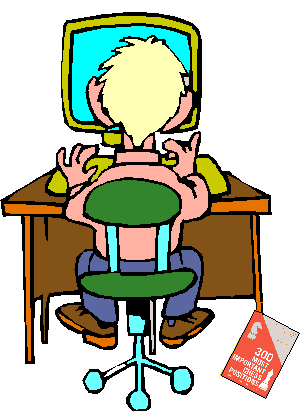
(I mentioned the 3B s; on another site a few days ago. One poster suggested
today one of the B s stands for Bathroom as in using a mobile in the toilet.)
Now where was I? Oh Yes! George Perigal - Wolf Meyer Popert, London 1837
I'll give the Morphy game. Look at move Morphy s 17th move and find a better move.
Paul Morphy - Charles Stanley, Casual game, New York 1857
Back here. Morphy to play his 17th move.
17.Rad1 Bringing the last piece into play with a threat. It wins easily in all variations.
Such moves pop up all the time in Morphy s games, especially in cordial games where
he was often given the chance to display his full range of talent. This miss is surprising..
The thread accompanying this blog is Thread 201043

